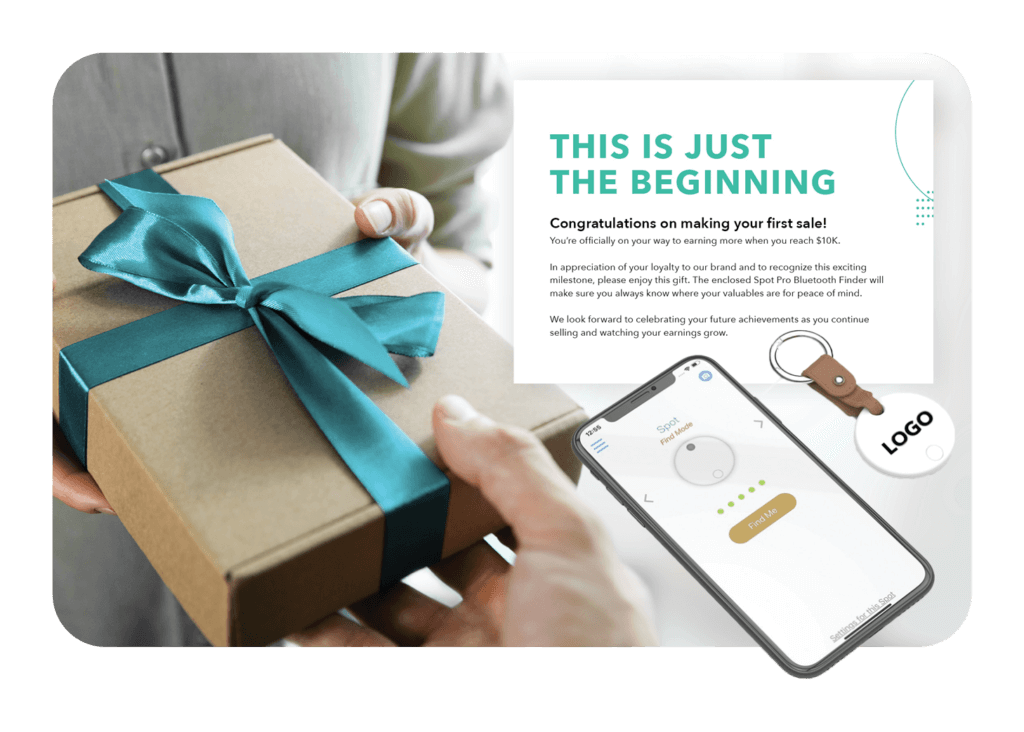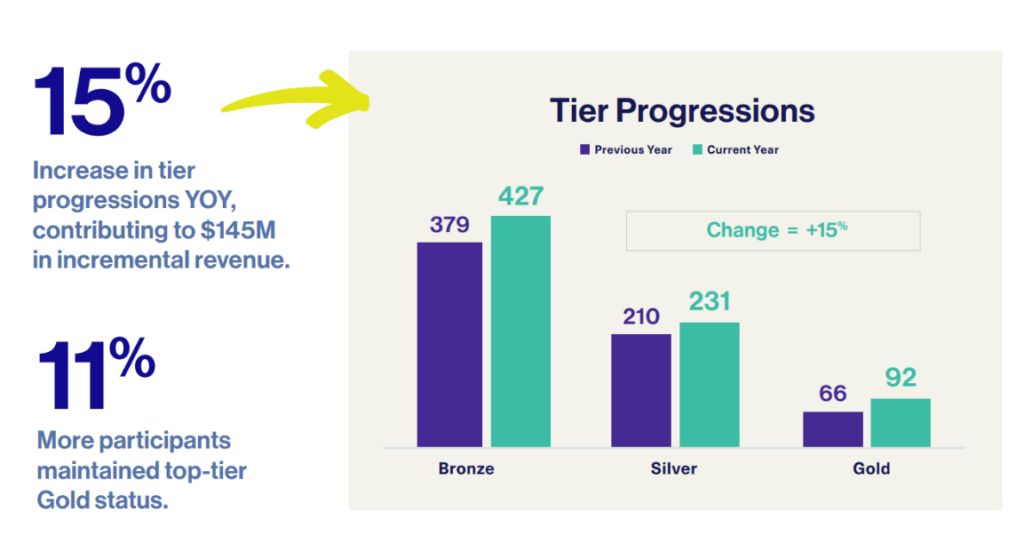
Reinventing a Dealer Incentive Program
And Proving "What's Always Worked" Can Work Better
There comes a time when every long-standing incentive program needs a strategic review—not because it fell short, but because the market, the sellers and the stake have evolved. For brands navigating mature industries, facing stagnant performance or feeling the pressure to grow without expanding budgets, the challenge is clear: how do you evolve a legacy program into a modern engine for loyalty and sales?
Challenge:
Reinvigorating a Long-Standing Program
A leading manufacturer had been running a channel incentive program for years, rewarding dealer sales reps (DSRs) who have discretion when selling their brand vs competitors. While the program has seen a successful and even considered a market-leading example, the company’s leadership began to questions whether it was still driving incremental behavior or if they were simple continuing it out of habit and expectation.
They wanted to take a fresh look: to push top performers to stretch further, spark new sales growth and create deeper emotional engagement with participants.
To help rethink the approach, they turned to Maritz, their trusted long-time partner. While the existing approach had served them well for years, we saw this as an opportunity to evolve the program alongside their goals and design a next-gen program that would inspire even greater performance.
Key Challenges:
Complex Earning Model
Sales reps had to navigate an intricate list of SKUs to determine eligible incentives, creating confusion, misalignment and disengagement.
Limited motivation for High Performers
Top sellers wanted extra opportunities to earn and be rewarded for selling more, so the program might have been leaving money on the table.
Desire to Build Loyalty and Emotional Connections
The program relied mostly on cash, missing an opportunity to drive engagement and resonate emotionally with non-cash rewards.
Need for Incremental Growth
Leadership wanted to encourage more sales without simply increasing payouts across the board.
Our Solution:
A Smarter, Simpler, More Engaging Incentive Program
Maritz took a fully integrated approach, combining insight-driven strategy, behavioral science and incentive design. The result: a simpler, more motivating program that better aligned with rep behavior and business objectives.
We brought together a variety of products and services to deliver the version for the new program:
Foundation: Insights Study for Research-Driven Strategy
What we heard:
- Keep it simple. Simplicity in program rules was ranked as a top driver of engagement.
- Make it clear. Some participants said they found it “hard to understand tier levels.”
- Reward from dollar one. Reps preferred programs where “all products qualify” and they earn a percentage from the first sale.
- Stretch goals for high performers. Top sellers were open to working harder—if it meant earning more.
- Non-cash rewards matter. Gifts and merchandise made participants feel appreciated and more motivated.
What's actually meaningful to your partners?
We looked at this not as a rhetorical questions, but as a guiding principle to do real research.
Maritz conducted a participant insights study to understand partner sentiment, uncovering key opportunities to improve the program.
This foundational research helped us design a program that felt more intuitive, more rewarding and more representative of reps’ preferences.

Redesigning the Rules & Rewards
With a clearer view of what participants value most, gleaned through both direct feedback or broader understanding of effective incentive design, we reimagined certain program elements to better align with what truly drives engagement. We looked at: behavioral science, updated rule structures and a non-cash rewards strategy.
1. Behavioral Science & Incentive Design
Our design team incorporated proven behavioral science concepts to structure smarter earning opportunities:
- Endowed Progress Effect:
People were given a head start on their goal, which allowed them to view themselves as already having made progress. This sense of momentum motivates them to move faster and continue advancing toward the target. - Goal Gradient Theory:
The program’s tier structures were designed to tap into participants’ natural drive to accelerate their efforts as they approach the next threshold, making each tier a powerful motivator. - Loss Aversion:
Resetting tier status each year creates a healthy pressure to maintain status and avoid losing benefits.
2. Rules Designed to Drive Behavior
Is the program set up to reward the right actions?
To ensure the program was built to drive the right behaviors and outcomes, the Maritz decision sciences team modeled multiple earning rule scenarios and analyzed their projected impact. This helped the client understand how different structures could influence seller behavior, program cost and incremental sales life. Each option was evaluated to ensure changes would produce meaningful gains, not just higher payouts.
By comparing the predicted outcomes, the client was able to confidently select the structure that offered the strongest performance potential with cost-effective results.
Key updates:
- Removing Friction:
SKU-based eligibility requirements were removed so sales reps could earn on every sale, reducing confusion and making participation easier. - Stretching Performance:
Tier thresholds were raised to encourage stretch behaviors without disengagement, ensuring participants worked toward higher earning potential. Sellers now earn at progressively higher rates as they move up in tiers, unlocking bonus points at each new level and adding an extra motivational boost. - Incentivized Training:
Particpants who complete required training on time gain early access to rewards, even if they haven’t yet hit he usual sales threshold. This helps rookies gain traction.

3. Expanding Beyond Cash Rewards via Promotions
Cash is expected in this industry; sellers prefer it and often rely on it as part of their compensation. But when “more cash” becomes your only lever, your options shrink: you either pay more to maintain attention or risk disengagement over time.
That’s why we introduced non-cash promotions and experiential rewards designed to complement the core cash offering. These rewards aren’t meant to replace cash—they’re meant to spark energy, create emotional impact and drive behavior in ways cash alone can’t. Together, they help you keep sellers excited and connected without constantly increasing budgets.
Program enhancements included:

Diversified Rewards
Introduced points-based rewards, branded gifts and premium merchandise alongside traditional cash incentives.

Seasonal Promotions
Rolled out limitied-time promotions featuring high-impact non-cash incentives like travel and exclusive merchandise. Campaigns also included fun prize drawings (like iPads or other popular products), gamification and random draws to spark faster engagement, encourage terms and conditions acceptance and build early excitement.

Recognition Gifts
A new gift system for key milestone moments:
- “Rookie’s First Sale” gifts celebrated early success and reinforced positive behavior.
- “Top Performers” gifts honored those who sustained Gold-tier performance, making recognition feel more special and reinforcing continued achievement.
By enhancing how and what participants earn, the program became more emotionally rewarding—guiding desired behaviors more effectively and elevating the overall impact of the program.
Results: Increased Engagement, Higher Sales and Stronger Loyalty
The revamped incentive program is delivering measurable impact—from higher sales and stronger loyalty to a more engaged and motivated salesforce.

Stretch Goals: Sales Reps Rise to Meet Higher Tier Thresholds
When tier thresholds increased by 20% after the rule redesign, so did sales. Clusters of reps landing just at or above tier breakpoints is a clear sign that many are motivated to push their sales to qualify. After the new thresholds are introduced, that cluster shifted upward, showing sellers were willing to stretch further to meet the higher bar.

Increased Tier Progression:
The program didn’t just accelerate top performers — it helped more sellers advance.

The first year after raising their thresholds, we observed fewer participants moving up because they didn’t meet the new, higher requirements. But by year 2, more DSRs who had been moved down fought their way back up — a clear signal that they were motivated to reclaim their status.

Our takeaway? Many of these reps experienced higher payouts in year 1 due to being grandfathered into their original tier. After losing that status for year 2, they were motivated to regain it, demonstrating how stretch incentive structures can drive behavior over time.
Sales Growth Attributed to Both Rookies and Top Performers
Notably, the program didn’t just motivate the same group of top achievers. It also sparked meaningful gains among rookies and mid-tier sellers. We saw growth across every level of the salesforce.
Sustained Engagement and Loyalty
Maintained Seller Retention:
Despite structural changes to the program, seller participation remains strong with an average 81% annual retention rate — a key indicator of loyalty and long-term behavioral changes.
Higher Satisfaction:
Program satisfaction scores are 4.4 out of 5, reflecting the impact of an engaging, rewarding experience.
Looking Ahead
This transformation proves what’s possible when data, behavioral science and thoughtful design come together to drive performance. By simplifying rules, motivating stretch behaviors and expanding rewards beyond cash, Maritz helped this brand reignite loyalty while delivering bottom-line impact.


